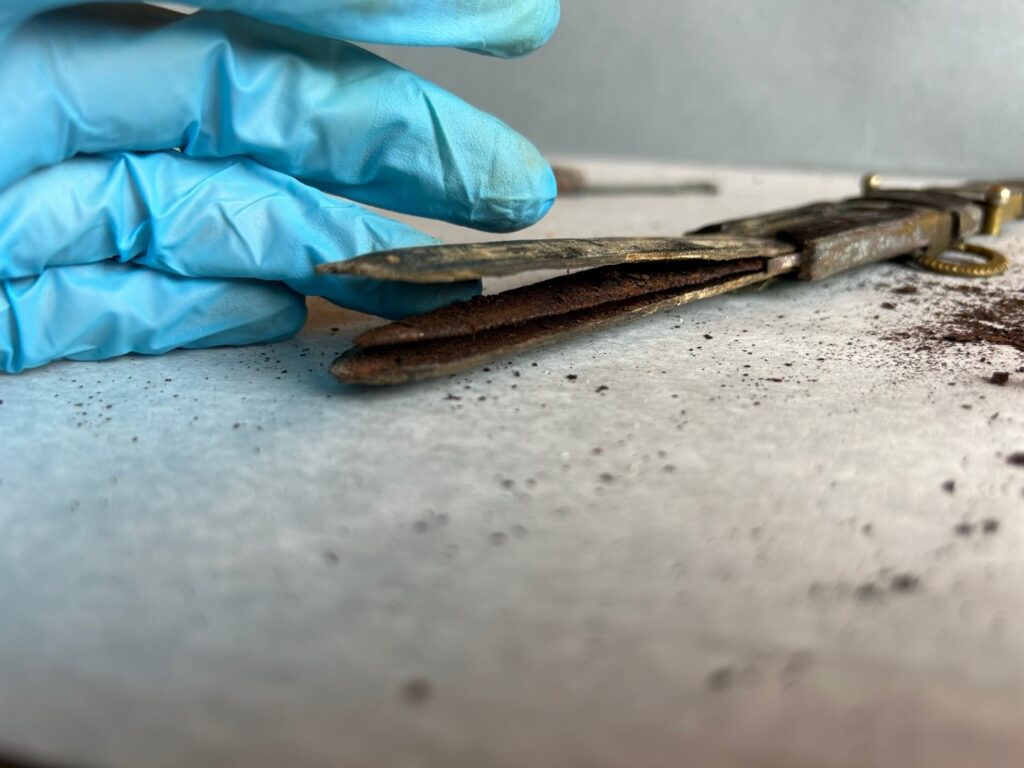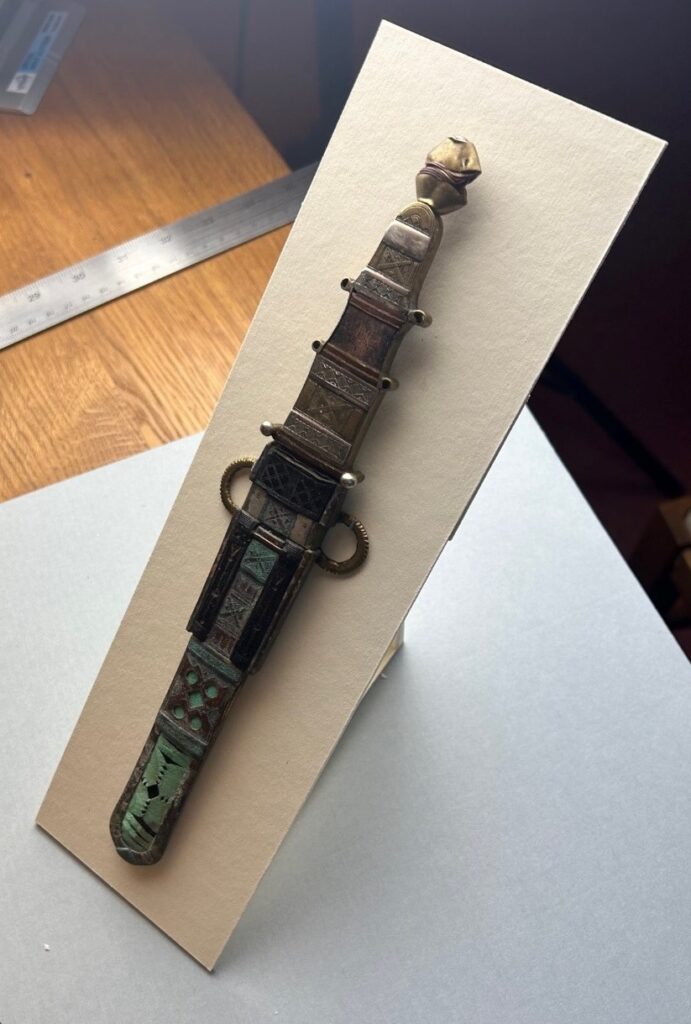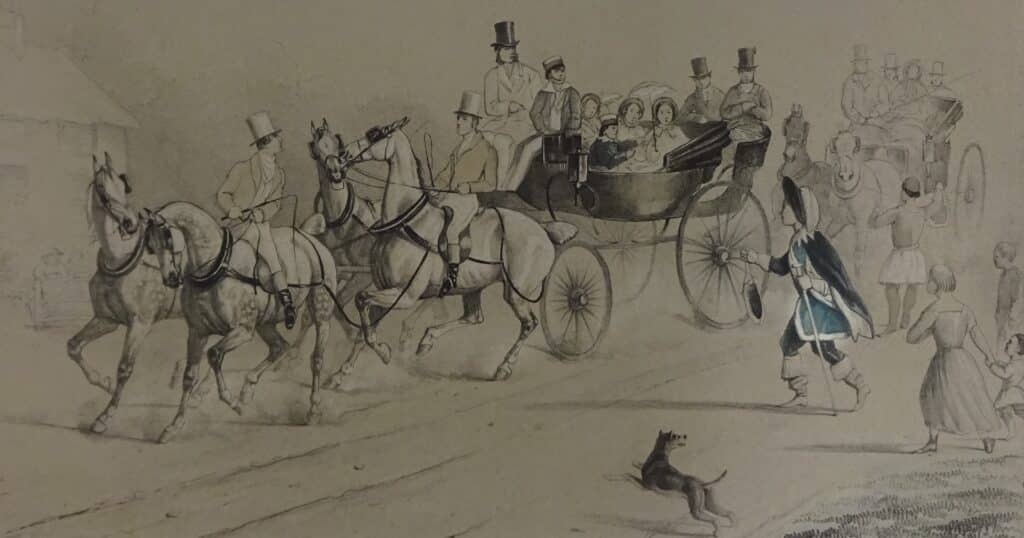The cold and wet winter months are not the favourite season for many of us, and the same goes for the objects across Eton College’s collections. High levels of humidity, which are difficult to control in old buildings, can cause objects to deteriorate. This presents differently in various materials. I am a Metalwork Conservation student from West Dean College, and during my two-week placement working with Claude and Sara from Eton’s collections care team, I was able to work with a deteriorating Tuareg dagger on display in the Natural History Museum.

On examination, there was white powdery corrosion around the end of the sheath, the brass elements had tarnished extensively and the decorative hilt had been compressed. It was clear the dagger was in rough shape. Even trying to remove the sheath to see the blade was impossible – it appeared that someone had forced the sheath too far up the blade and at some point, a combination of the blade corroding and the object becoming compressed resulted in the sheath being permanently adhered to the blade. Fortunately, some part of the blade was accessed as the lower sheath was not firmly attached and could be eased away. The surface layer of ferrous corrosion (rust) was removed with a scalpel, gently picking away large chunks and flakes.

One of the big questions during this treatment was how far should the blade be treated? In an ideal world, the sheath would come away easily and I could treat the blade in a specific type of solution called a ‘chelating solution’ which works by the molecules selectively removing the corrosion products, leaving stable metal behind. This cannot be done with leather in such close contact but the sheath could not be removed. It was decided the best outcome was to surface treat the accessible part of the blade and leave the rest. It does mean that more ferrous corrosion may form over time but the damage that could be inflicted by forcing the sheath away may be more difficult to fix than the hidden rust.

The second big question was what are the white deposits on the sheath? Advice from other conservators suggested this was a deterioration product from the interaction between the leather and the metal, which made sense–this was localised around the coloured leather. However, this was only present on the metal, not on the leather, suggesting this was a metal deterioration product. This was treated with small amounts of solvent, mostly IMS and a little white spirit, ensuring there was enough ventilation while this was being used. The metal surface was then cleaned using a glass fibre brush and large pieces of the white deposits were removed using a palette knife. How engrained it was in the sheath indicated it was a corrosion product. This potentially could be zinc corrosion. As with the additional green/blue copper corrosion patches, the metal elements of the object are likely made of brass (made of copper and zinc).

Once all active corrosion was removed, the lower part of the sheath was refitted. A mount was made from conservation-grade mountboard where the dagger was held by two pins covered in PTFE tubing to protect the object. Now, it has been returned to the Natural History Museum and will be carefully monitored in case the corrosion returns.
Caitlin Young, Conservation Volunteer



